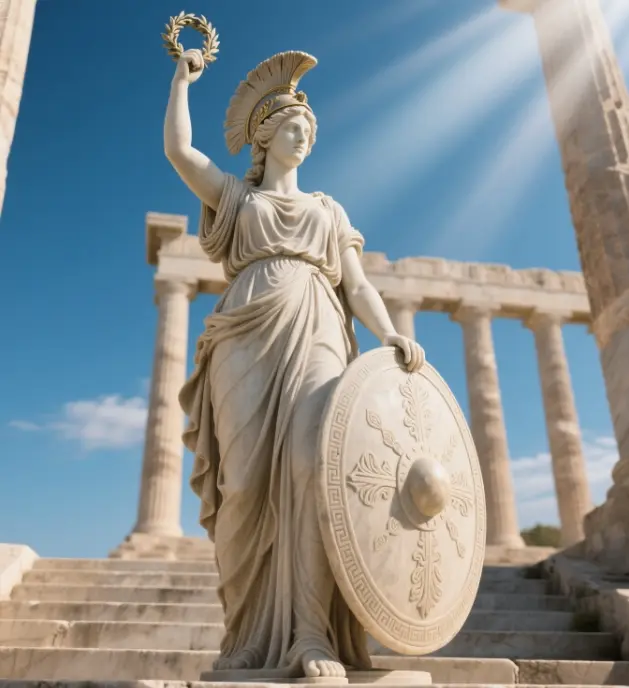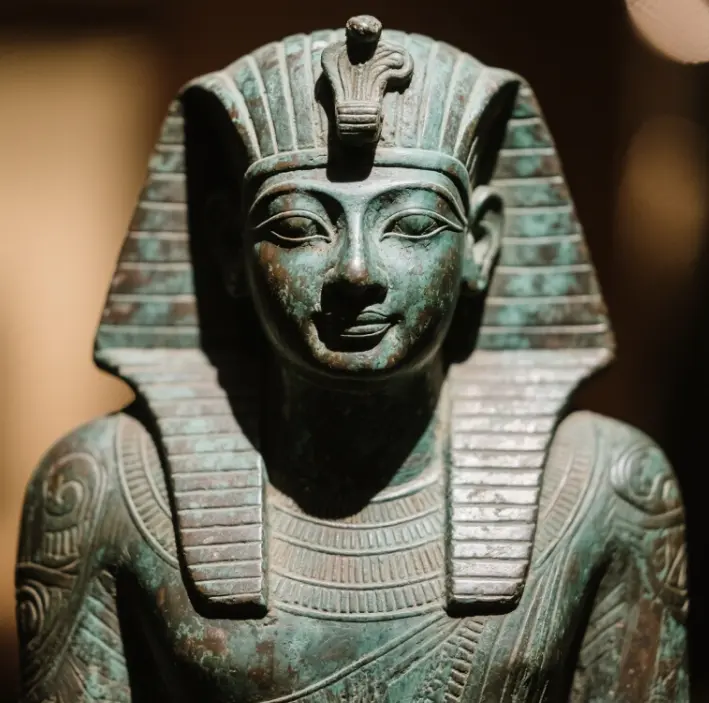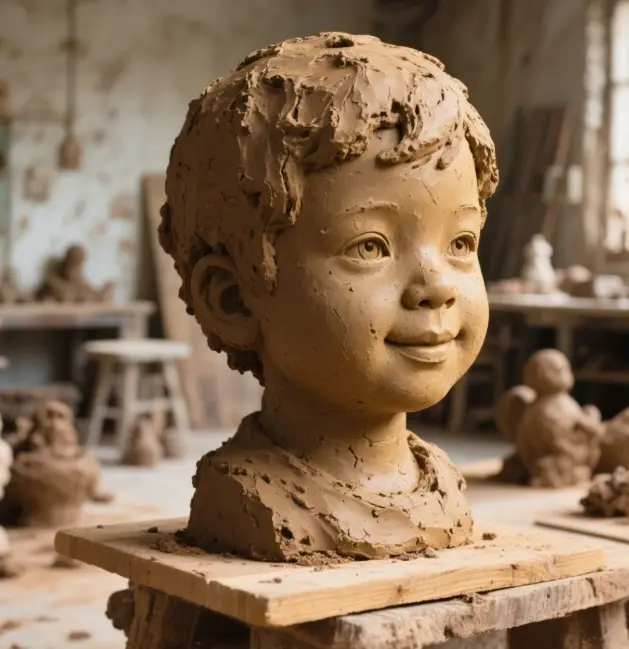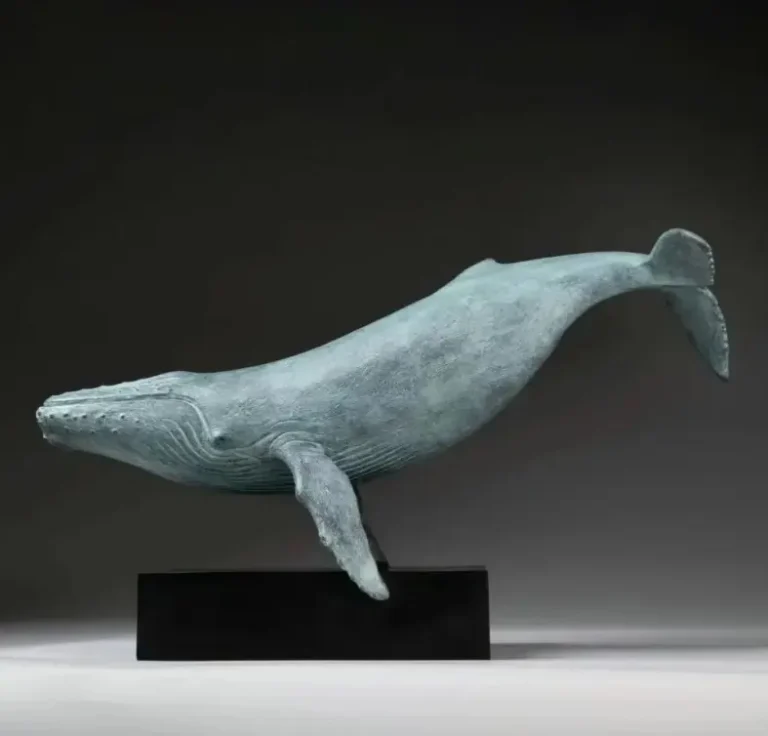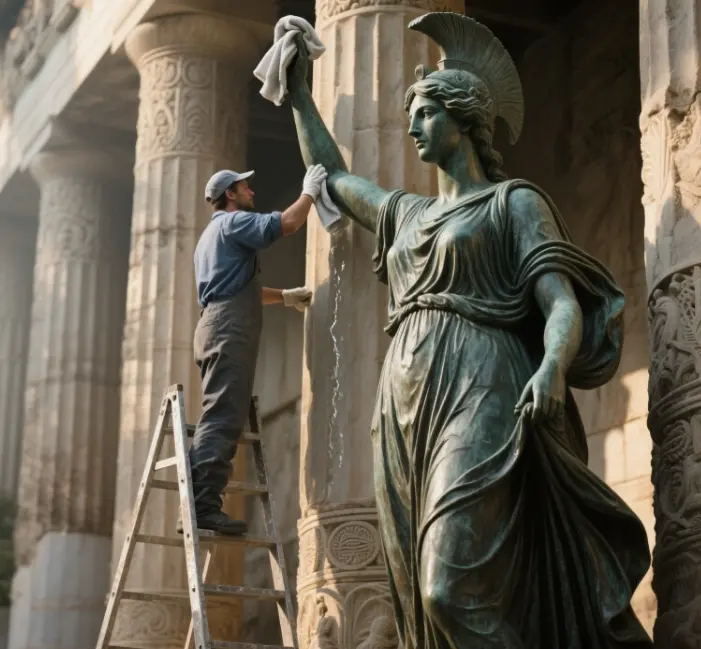Sculpture is a three-dimensional art form whose history stretches from ancient Egypt to the studio lofts of contemporary sculpture. Yet whether a piece is a tabletop polymer-clay figurine or a monumental bronze in a public plaza, every sculpture begins with two fundamentals: a choice of materials and a choice of method. This guide surveys the essential sculpting techniques and materials in use today, offering practical insights for beginners and advanced artists alike.

What Are the Different Types of Sculpture Techniques?
From primitive stone axes to robotic milling arms, every period has relied on four foundational methods—subtractive carving, additive modelling, casting, and assembling—to transform raw matter into enduring works of art. This section explains the mechanics of each approach, the materials and techniques traditionally paired with them, and the kinds of visual language they encourage. You’ll see why subtractive carving favours marble’s translucence, how clay and wax empower spontaneous modelling, why bronze casting captured Renaissance imaginations, and how welded steel enabled Picasso’s bulls. Understanding these essentials equips any artist to match idea to method and material with confidence.
What Techniques Are Used to Make Sculptures?
Most sculptors rely on four basic methods:
| Technique | Short Definition | Typical Materials Used | Classic Example |
|---|---|---|---|
| Subtractive sculpting | Removing mass to reveal form | Marble, limestone, sandstone, wood | Michelangelo’s marble David |
| Additive modelling | Building form by addition | Clay or wax, plaster of Paris, polymer clay | Degas’ wax figure studies |
| Casting techniques | Reproducing a model in durable material | Bronze, iron, resin | Rodin’s The Thinker |
| Assembled sculpture | Joining readymade parts | Sheet metal, mixed media | Picasso’s welded bulls |
These four pillars underlie almost every other sculptural process variant—from kinetic sculpture to digital foam milling.
How Do Sculptors Choose Their Medium?
A sculptor weighs the purpose of sculpture (public monument, gallery piece, garden animal sculptures) against cost, scale, and finish. Stone promises permanence; air-dry clay offers speed for maquettes; bronze grants strength with refined detail. This deliberate choice of materials is the first design decision.
What Are Some Contemporary Sculpture Techniques?
- Mixed-media hybrids merge glass, steel, and textiles.
- CNC routers allow “subtractive” carving in foam before hard-coating.
- 3-D printing lets modelled sculptures in PLA act as patterns for lost-wax metal pours.
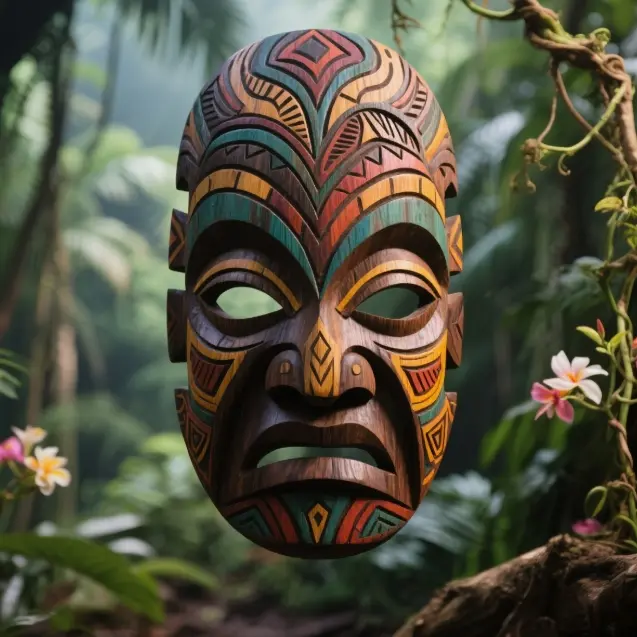
How to Get Started with Sculpture as a Beginner?
Embarking on sculpture needn’t require a quarry or foundry. This part outlines a stripped-down toolkit—loop tools, rifflers, inexpensive chisels—and introduces forgiving media such as water-based clay, plaster of Paris, and lightweight armatures. It discusses workspace safety, moisture management, and the discipline of working from general forms to detail. By comparing basic techniques like pinch modelling to small-scale assembled sculpture, beginners learn how to build skill systematically while avoiding common pitfalls: dried-out clay, top-heavy figures, and rushed surface work. Armed with these insights, newcomers can progress from playful prototypes to refined three-dimensional work of art.
What Basic Tools Do You Need to Sculpt?
At minimum: a steel chisel, wooden modelling tools, loop scrapers, small rasp, spray bottle, calipers, mallet, and goggles. These tools used adapt to stone, wood, or clay.
Which Medium Is Ideal for Beginners?
Modelling clay—water-based pottery clay or oil-based plastilina—remains the easiest medium. It is reusable, responds to hand warmth, and teaches principles of mass and volume.
What Are the Common Mistakes Beginners Make in Sculpting?
- Working without an armature, causing sagging.
- Ignoring proportion early.
- Over-detailing before forms are locked.
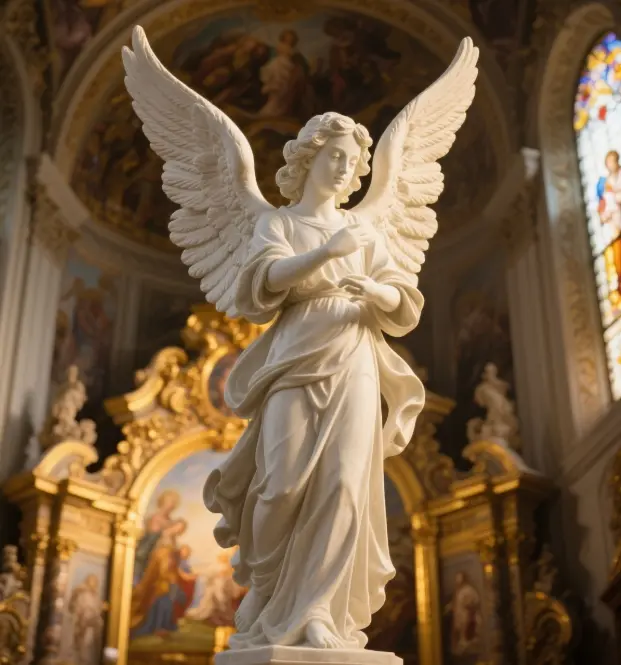
What Materials Are Typically Used for Sculpture?
Materials shape meaning. Here you’ll encounter clay’s plastic immediacy, plaster’s rapid casting flexibility, bronze’s tensile reliability, and resin’s modern versatility. We compare firing schedules for ceramic sculpture, the patination chemistry of bronze sculpture, and the curing profiles of epoxies, spotlighting how each option influences scale, cost, and installation setting. The segment also touches on sustainability—re-carved limestone, recycled aluminum—revealing how a considered material choice can echo an artwork’s conceptual core while satisfying practical demands such as weather resistance and transport weight.
How to Work with Clay for Sculpture?
Clay is one material every sculptor encounters. Kept moist, it remains plastic; once fired it becomes ceramic sculpture. Air-dry clay cures at room temperature—perfect for maquettes.
What Are the Advantages of Using Plaster in Sculpture?
Plaster can be poured into a mould where it becomes a creamy liquid and hardens quickly. Artists use it for life casts and rapid prototypes.
Why Is Bronze a Popular Material for Sculptures?
Bronze, an alloy of copper and tin, flows into intricate moulds, is strong in thin sections, and develops a protective patina—ideal for outdoor display.
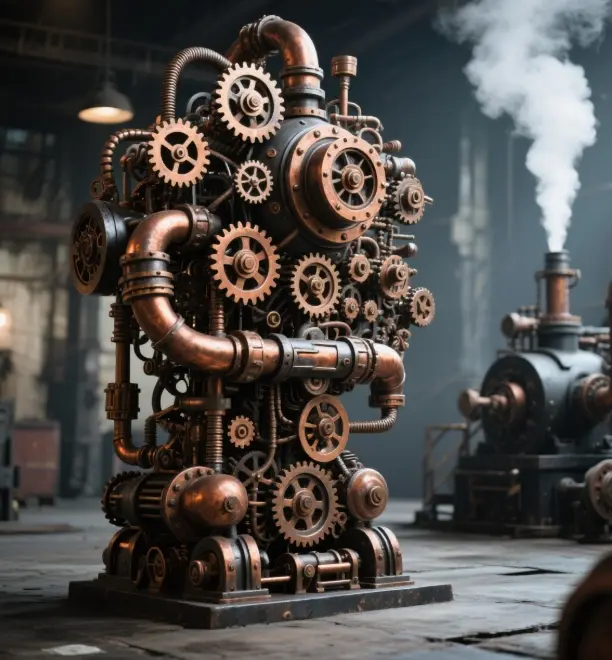
What Are the Techniques Used to Carve Stone Sculptures?
Carving stone calls for patience, rhythm, and geological insight. This discussion maps out the entire workflow: selecting blocks of marble, limestone, or sandstone; establishing reference points; “roughing-out” with pitching chisels; refining anatomy with tooth chisels; and polishing with abrasives. Along the way you’ll learn how grain orientation, embedded fossils, and micro-fractures influence each stroke; why diamond blades supplanted forged steel; and how pneumatic tools accelerate removal while preserving hand-tool intimacy. Whether a small onyx pendant or a multi-tonne portal, every stone piece begins with controlled chipping away toward light.
What Types of Stone Are Commonly Used in Sculpture?
- Marble: prized for translucency.
- Limestone: easily carved.
- Sandstone: plentiful yet varied.
- Granite: extremely hard.
How to Use a Chisel Effectively in Stone Carving?
Begin with a point chisel, move to toothed chisels, finish with flats. Maintain edge sharpness and respect natural fissures.
What Are the Steps for Creating a Stone Sculpture?
- Rough blocking.
- Secondary modelling.
- Contour refinement.
- Surface finishing.
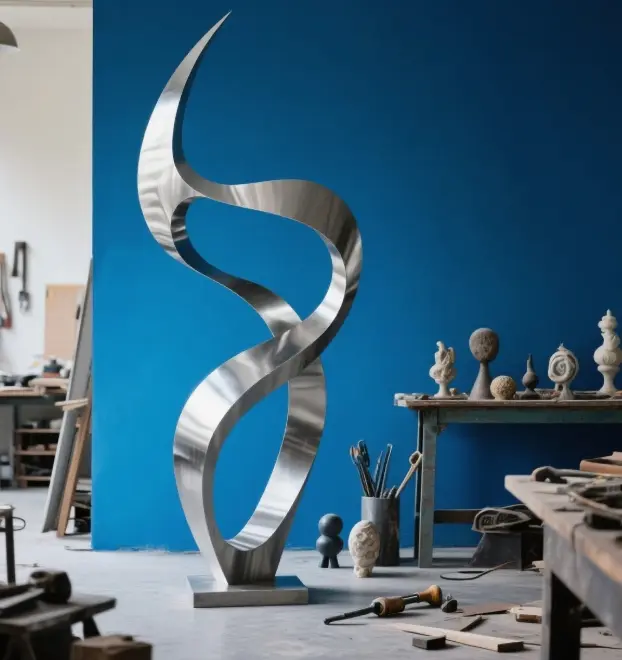
How to Create a Relief Sculpture?
Neither fully two- nor three-dimensional, relief blends drawing with carving. Here you’ll compare bas-relief’s shallow illusion to high-relief’s dramatic undercuts, analyse how raking light animates stone façades, and see why bronze repoussé panels serve church doors so well. The section guides you through choosing substrate, building clay overlays, making silicone negatives, and finally casting an enduring platter. Tips cover edge treatment, negative-space mapping, and the subtle art of compressing full narrative breadth into a slab only centimetres deep—proof that depth in sculpture is as psychological as it is physical.
What Techniques Are Used in Relief Sculpture?
High-relief uses deep undercuts; bas-relief keeps shallow depth to integrate with architecture.
How to Choose the Right Background for Relief Sculptures?
A flat limestone slab ensures uniform depth; thin sheet wax on glass supports metal repoussé.
What Types of Materials Work Best for Relief Sculptures?
Plaster panels, wood boards, and bronze plates provide crisp edges for narrative panels.
What Are the Key Features of Metal Sculpture?
Metal allows sheets to fold, wires to flex, and molten alloys to capture fingerprints. This chapter explains lost-wax bronze, TIG-welded stainless, and Corten steel’s self-healing rust, comparing their structural virtues and maintenance demands. You’ll learn why aluminium suits kinetic sculpture, how patinas modulate reflective glare, and what dangers—thermal distortion, toxic flux fumes—accompany large pours. Metal’s ability to span without sag makes it a favourite for bridges, gateways, and soaring abstractions, but that freedom carries weight: armatures must align, cranes must hoist, and every weld must bear scrutiny long after the finished sculpture is installed.
What Techniques Are Commonly Used in Metal Sculpture?
Lost-wax casting, sheet-metal forming, and forged fabrication dominate studios today.
How Does Casting Work in Metal Sculpture?
A clay model is coated in wax, encased, burned out, then poured in bronze; sprues are excised and patina applied.
What Are the Challenges of Working with Metal as a Medium?
High temperatures, heavy lifts, and corrosive environments demand specialised tools, ventilation, and long-term maintenance planning.
From quarry-hewn marble to computer-generated assemblies, the variety of materials and methods of sculpture available today is richer than ever. Yet each successful piece—whether a hand-sized ceramic rabbit or a plaza-spanning metal sculpture—shares one lineage: a dialogue between idea, material, and technique. Master even a few of the practices outlined in this guide to sculpture, and you’ll be ready to create a sculpture that not only occupies space but transforms it—affirming sculpture’s timeless power as a three-dimensional work of art.

